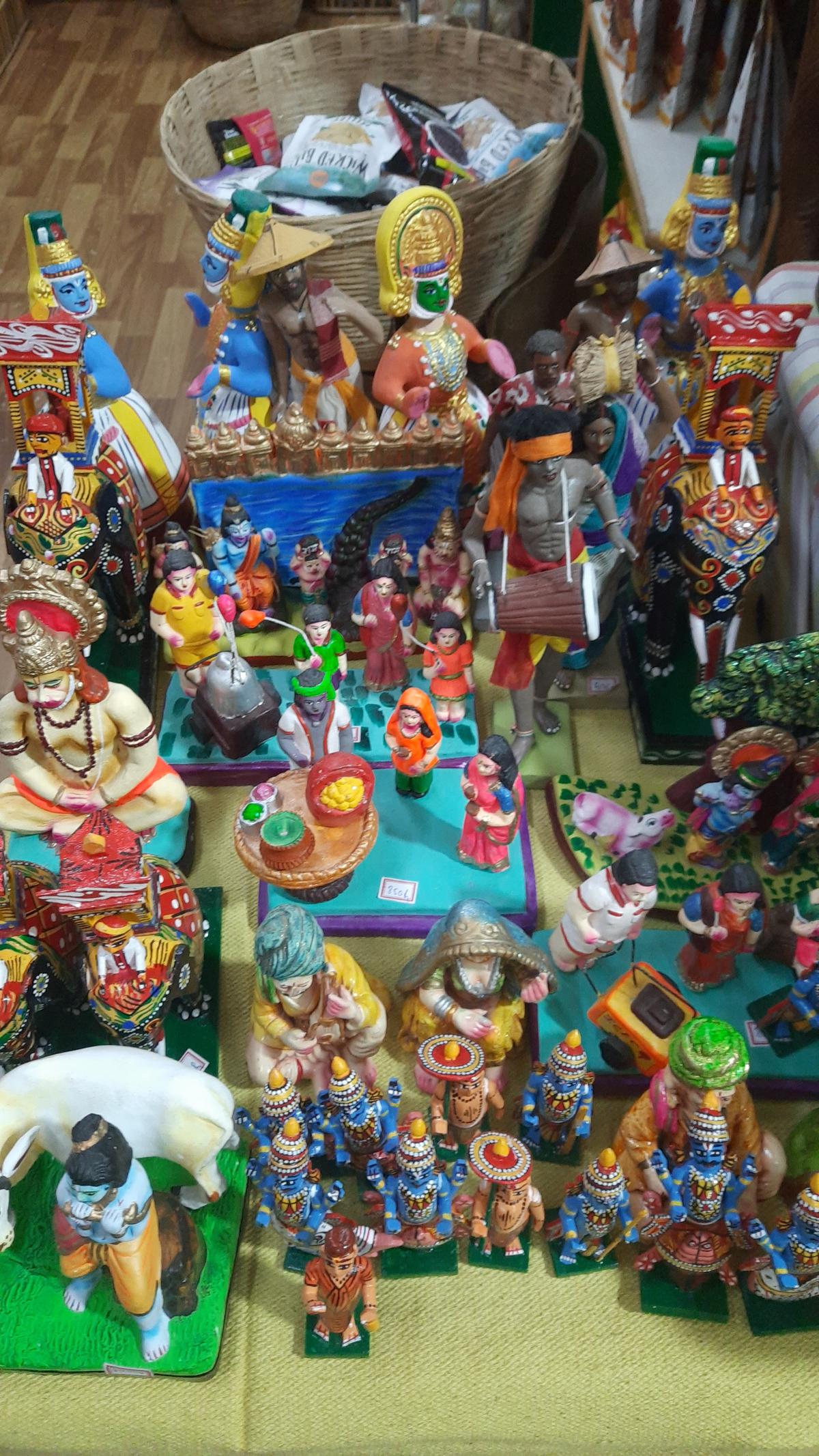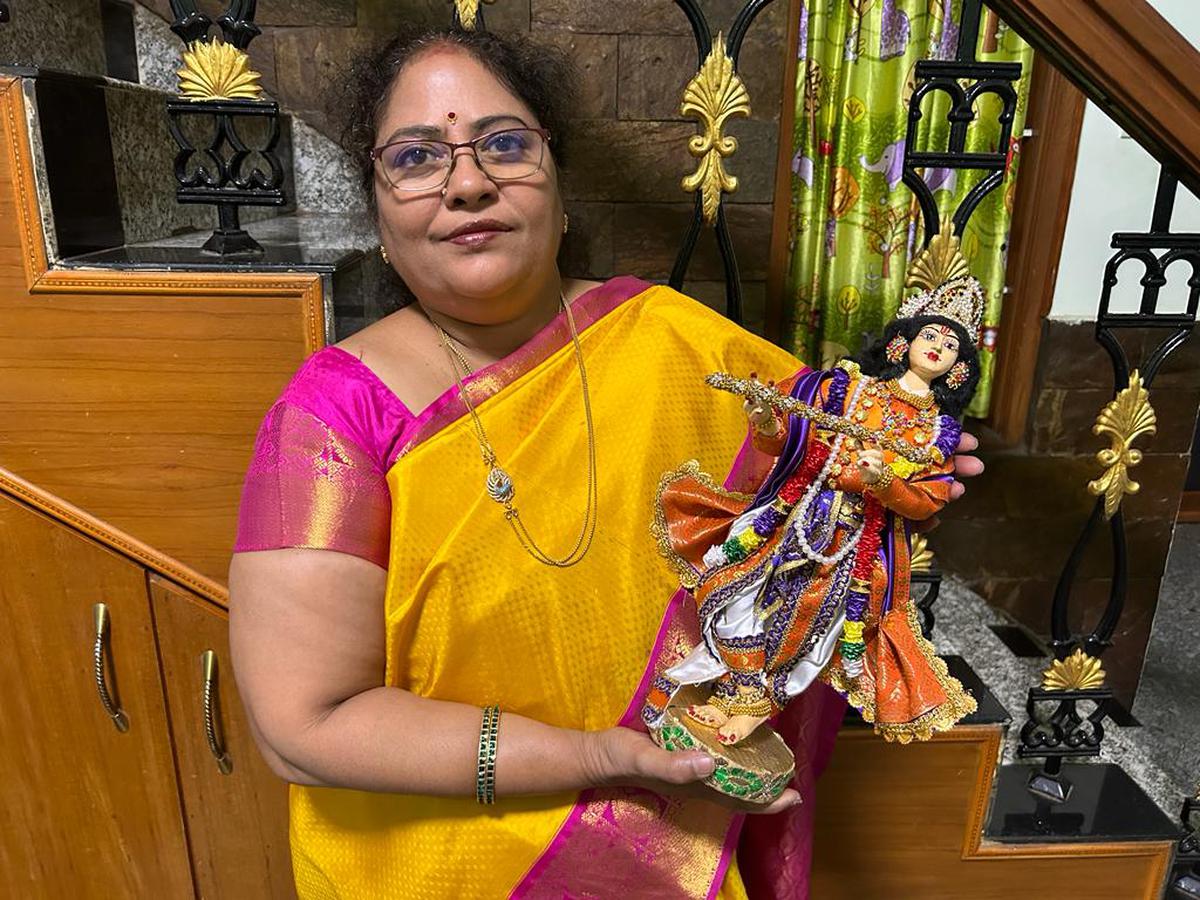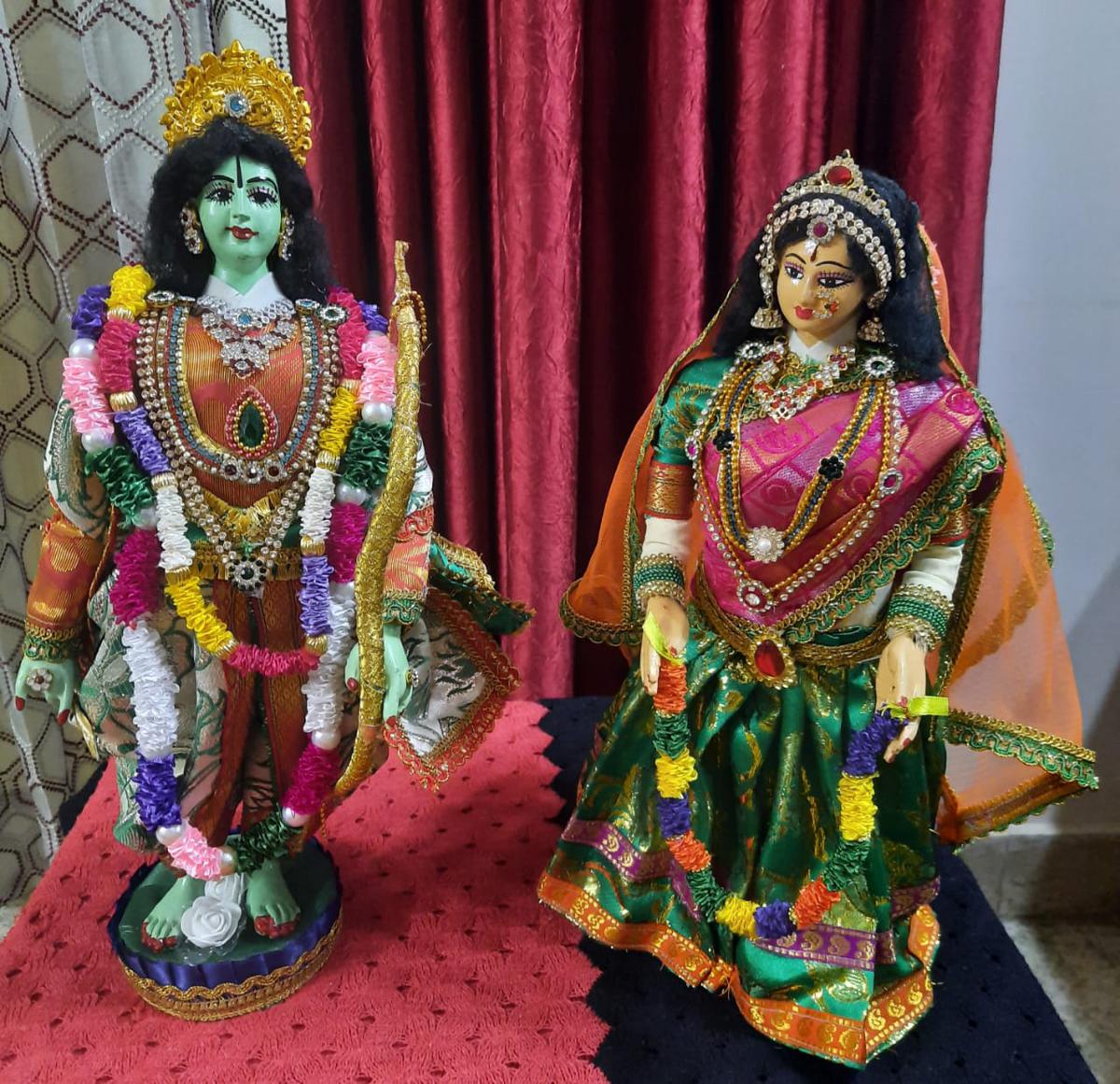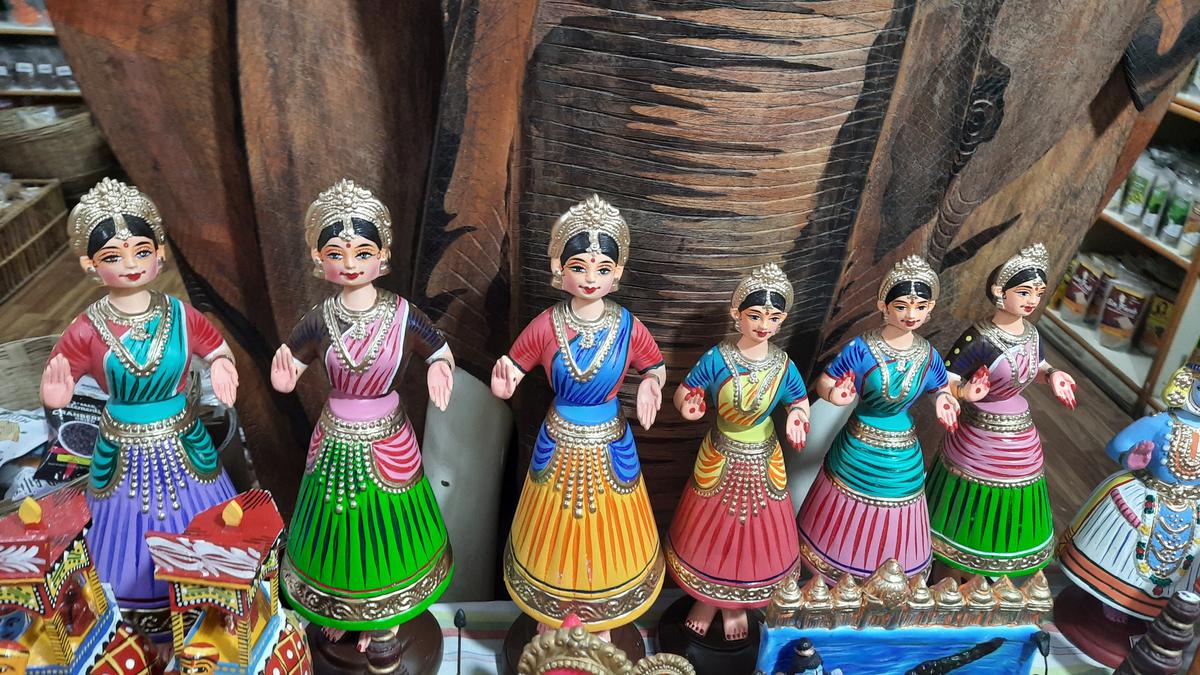How many kinds of dolls do you have in your display? This season, you can add to your collection with a wide range of dolls from Karnataka, Tamil Nadu, Andhra Pradesh, West Bengal and Rajasthan. Grameena Angadi has over 250 varieties of dolls — in terra cota, wood, marble, grain, papier mache and fabric — especially stocked up for this Dussehera.
Doing away with middlemen, Grameena Angadi sells everything handmade and organic, from handicrafts, textiles, food products to grocery to empower rural artisans, farmers and cottage industries.
“All festive demands for crafts are met by sourcing them directly, and this year apart from Channapatna (Karnataka), Kinnala (North Karnataka) and Kondapally (Andhra Pradesh) dolls, that we generally promote, we also have terracotta dolls sourced from artisans in Kolkata, Kanakapura near Bangalore and Haranahalli in Shivamogga,” says B Gangadhara Murthy, from the village handicrafts cooperative Grameena Karakushala Udhyama, who is also manager of Grameena Angadi in Jayanagar 4th T Block-East.
Dolls at the Grameena Angadi
| Photo Credit:
Special Arrangement
“We have special fabric dolls supplied by Madhuri Bhat in Bengaluru whose small-time business is raising awareness and helping the art form survive. While she supplies to those in her inner circle, we market her artistically done pieces. We have received many orders, as they are aesthetic, easy to preserve and do not break.”
Grameena Angadi also has the heritage Channapatna wooden dolls that last for generations thanks to their non-breakable features and special lacquer. The mud dolls from Kanakapura are quite interesting as are the tiny, three-inch ones from Kolkata, featuring musicians and freedom fighters.
“We also have mud dolls depicting stories from the Ramayana and Mahabharata from Tamil Nadu and wooden Dashavatara from Kondapalli made from moringa wood,” says Murthy, as he shows us miniature Ganeshas made from nine varieties of grain, which are also long-lasting.
However, this year, apart from the amazing range to choose from, there is a rise in price as well. Local art and crafts store dealers in Bengaluru quote several reasons for the high price of dolls crafted out of terracotta, plaster of Paris, wood, marble and synthetic marble.

Dolls at the Grameena Angadi
| Photo Credit:
Special Arrangement
Many local artisans have left their ancestral profession over the last few years for better paying jobs, Murthy says. “We have had to source dolls from remote regions in Karnataka that were still attached to cottage industries. The few doll makers who continue to ply their craft, earn most of their profits during festive season. Understandably, they charge for their expertise and this year has seen an increase of 20% in prices.”
The fact that these locally made dolls from Karnataka are gradually disappearing is another reason for the increase in price, says Murthy. “The Kinnala Gombe of North Karnataka’s Koppala district, a wooden painted doll art form encouraged by the Vijayanagara kings, have become quite rare.”
The Grameena Co-operative was established in 2002, supporting 10 families; today, it runs six shops in the city and helps more than 800 artisan families. For Dussehera, Grameena Angadi has 100 handmade dolls in different varieties on display at the store. The price of the dolls range from ₹175 to ₹3500. There is a Dussehera discount for the dolls as well.

Madhuri Bhat and her creations
| Photo Credit:
Special Arrangement
Small start
Madhuri Bhat, 56, who teaches mathematics at school, started making dolls as she was fascinated by them. Born and brought up in Kadapa, Andhra Pradesh, Madhuri pursued her B.Sc and BEd, but every time she passed a doll store or went to see Dussehera displays of friends and family, she would be intent on figuring out how the dolls were made.
“Doll making interested me even as a child. I would cut pieces of cloth and use cotton to shape them. I would not waste any scrap metal, string or pieces of wood or cloth, as they all came in handy for trial sessions. I would spend hours experimenting and designing them,” says Madhuri, who has now made Bengaluru her home.
Madhuri eventually upgraded her childhood skills, thanks to the encouragement of family and friends. Though she began making dolls on a larger scale as a social enterprise, she did not want to turn commercial. “Doll making is more than a craft as the artisan here passes on positive vibes during the process. Navaratri, for example, provides us with an occasion to solicit the goddess Durga’s blessings.”
Madhuri’s repertoire includes baby dolls, gods and goddess, brides and grooms, and all dance forms including Karnataka folk and Yakshagana, Bharatanatyam, Kuchipudi, Kathak and Mohiniyattam. “I take about 12 hours to make a doll and complete each with the required embellishments. Sometimes I can finish them in a day, others get extended for a day or two,” says Madhuri, who makes the dolls single handedly.
“As of now I make only fabric dolls with a fibre base and wooden stand for structural work. I clothe them with cotton and fabrics and then have them decorated. I need to read and keep myself informed about culture, mythology and history to be accurate and up to date.”
Madhuri’s dolls are available at Grameena Angadi.

Two of Madhuri Bhat’s creations
| Photo Credit:
Special Arrangement





